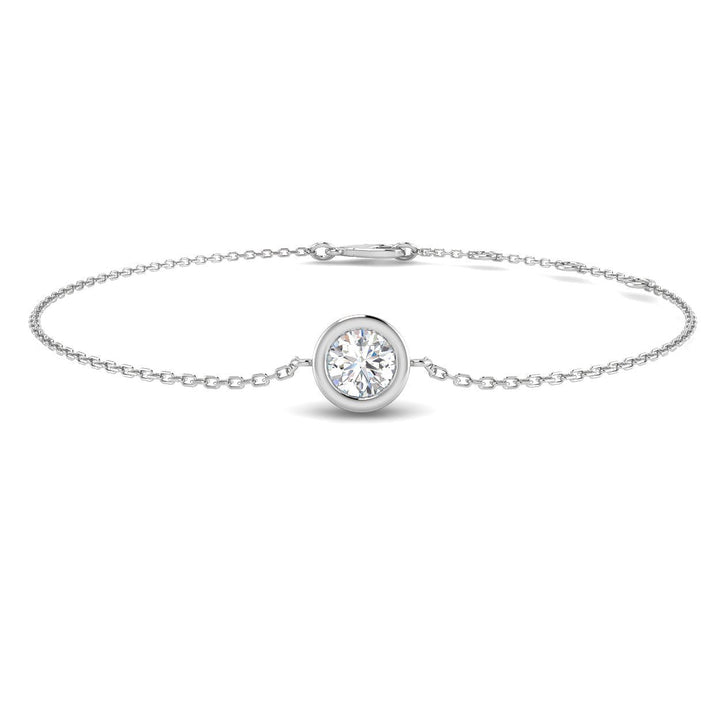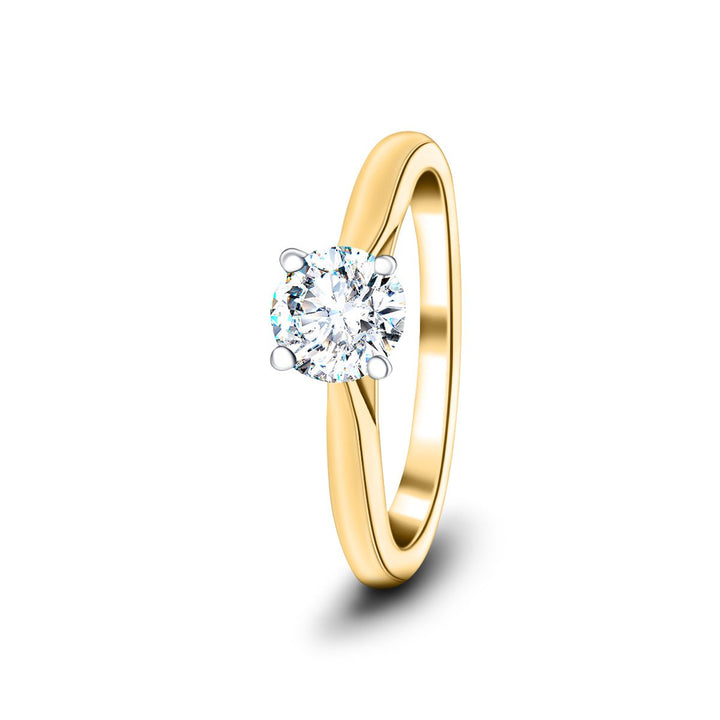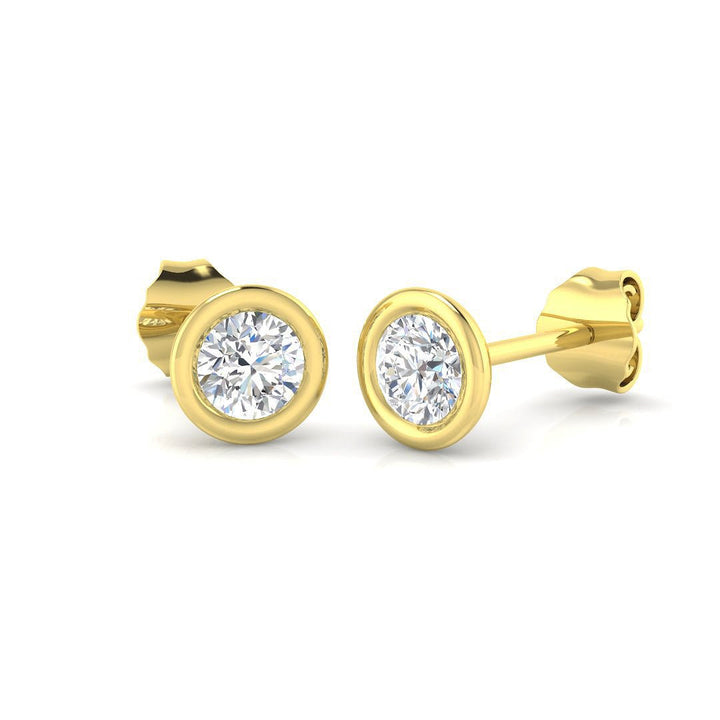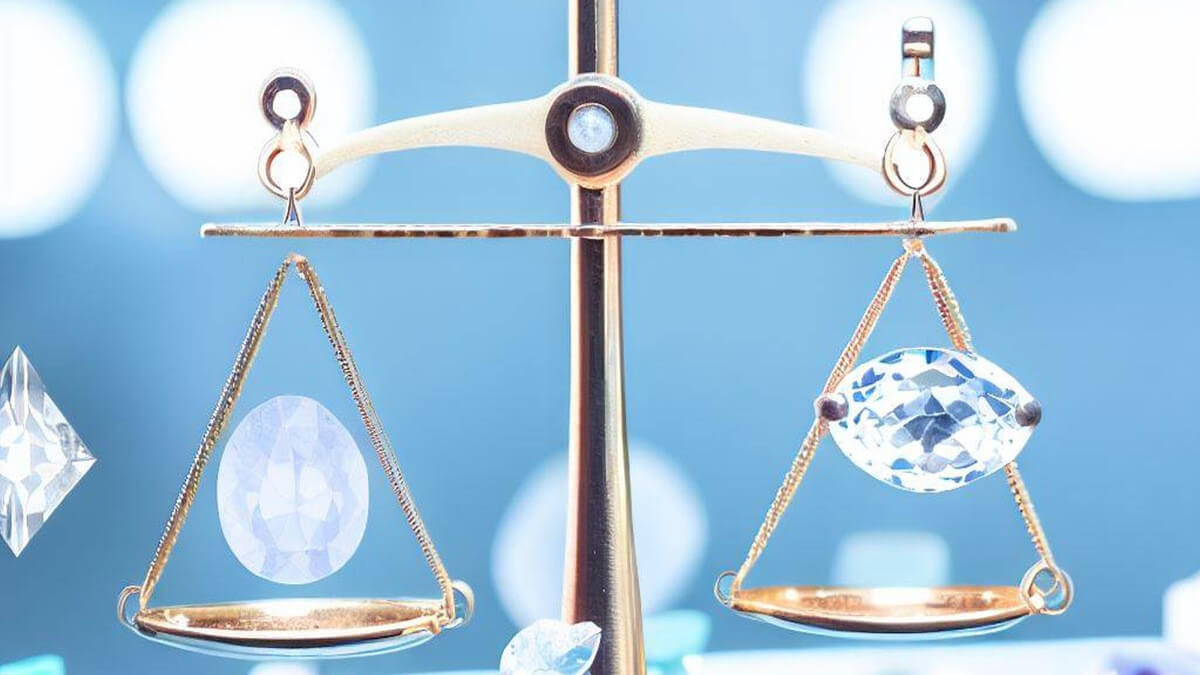With an estimated 70% of millennials considering lab-grown diamonds, the gemstone market is witnessing a paradigm shift.
This article comprehensively compares lab-grown diamonds and two popular alternatives: moissanite and cubic zirconia.
It examines the quality, durability, cost implications, ethical considerations, and environmental impact, providing essential insights for discerning individuals navigating the complexities of today's jewellery market.
Key Takeaways About Lab-Grown Diamonds and Other Alternatives to Mined Diamonds
- - Lab-grown diamonds have identical physical, chemical, and optical properties to natural diamonds, making them an excellent alternative.
- - Moissanite offers unique optical properties, such as fiery brilliance, and is more affordable than lab-grown and natural diamonds.
- - Cubic zirconia is a widely used diamond simulant, but it has limitations in terms of durability and wear resistance.
- Factors such as ethics, eco-friendliness, personal preference, and budget should be considered when choosing a gemstone alternative.
Understanding the Process of Creating Lab-Grown Diamonds
The processes used to create of creating lab-grown diamonds all rely on advanced technological methods, results in gemstones with identical physical, chemical, and optical properties to those of natural diamonds.
Transforming a minuscule carbon seed into a dazzling diamond is a high-tech and very intricate procedure that mirrors the intense heat and pressure conditions deep within Earth's mantle over billions of years. This marvel is only possible due to significant scientific advancements over many years in lab-grown diamond production.
Two prevailing methods are utilised: High Pressure-High Temperature (HPHT) and Chemical Vapor Deposition (CVD). Both processes initiate with a diamond 'seed', fostering it under controlled laboratory environments. HPHT mimics nature's creation by applying extreme temperature and pressure on the seed, while CVD uses a gas-rich environment for growth.
A comparison of lab-grown diamonds to natural diamonds reveals an indistinguishable difference in terms of origin characteristics. In fact, only sophisticated gemological instruments can discern between them. Striking similarities extend beyond just appearance; they encompass hardness and thermal conductivity - essentially everything but their place of origin. It affirms that a diamond remains true to its sublime essence whether mined from the earth's depths or cultured in labs.
Learn more about lab-grown diamonds, how they are made, how they can be identified and the relative benefits HERE.
£805.00
Showcase your style with the elegant Lab Solitaire Diamond Bracelet, featuring a 1.00-carat G/VS-quality bezel-set solitaire diamond in 9k white gold. The brilliant-cut diamond is IGI certified. The precious metal is UK-hallmarked, and a lifetime workmanship guarantee backs the whole… read moreLab Solitaire Diamond Bracelet 1.00ct G/VS Quality in 9k White Gold

£1,541.00
An Overview of Popular Gemstone Alternatives
Understanding various popular gemstone alternatives provides crucial insights for making informed choices in one's jewellery selection. Current market trends at the retail level indicate an increasingly strong preference for affordable, ethical, and visually appealing options such as lab-grown diamonds, moissanite, and cubic zirconia. Each option has unique advantages and disadvantages when compared to lab-created diamonds.
Lab-grown diamonds bear the same physical properties as their natural counterparts but offer more ethical sourcing. Moissanite's fiery brilliance and durability make it a favoured choice amongst certain consumers. Cubic zirconia offers affordability while maintaining an impressive visual appeal.
Consumer preferences often fluctuate based on factors like budget constraints, ethics considerations, and personal aesthetics. Lab-grown diamonds cater to those who value sustainability and conflict-free sourcing without sacrificing the traditional allure associated with diamonds. On the other hand, moissanite's extraordinary fire captivates those who desire to stand out from conventional trends. Meanwhile, cubic zirconia enjoys popularity for its cost-effectiveness and decent mimicry of diamond characteristics.
From the perspective of fine jewellery, only diamonds, whether lab-grown or mined, are good choices. Simulants such as Moissanite or CZ are best reserved for costume jewellery due to the compromises in terms of durability, appearance and emotional appeal.
Evaluating the Quality and Durability of Lab-Grown Diamonds Vs. Gemstone Alternatives
Quality and durability factors play critical roles when evaluating the value proposition of synthetic diamonds, moissanite, and cubic zirconia. A detailed quality assessment reveals that lab-grown diamonds share identical physical, chemical, and optical properties with their natural counterparts. They boast exceptional brilliance and fire, which contribute to their aesthetic appeal.
In a similar vein, moissanite exhibits unique optical characteristics. Its fiery brilliance and impressive hardness make it a worthy contender in the durability comparison. Notwithstanding its affordability, industry experts caution that its colour may not be as colourless as high-quality lab-grown or natural diamonds.
Cubic zirconia presents an economical alternative with a sparkling appearance. However, on the performance evaluation scale for hardness and wear resistance, it falls short of both synthetic diamonds and moissanite.
It is indispensable to bring ethical considerations into this comparative analysis. Synthetic diamonds offer conflict-free origins while reducing environmental impact—features that resonate deeply with a conscious audience seeking belongingness within responsible consumer practices.
Ultimately, though, personal preferences and symbolic significance accorded to these gemstones will steer individual choices in selecting the perfect gemstone alternative for their jewellery choices.
Ella Lab Diamond Solitaire Engagement Ring 1.50ct G/VS 18k Yellow Gold

£1,270.00
£2,426.00
Output: Make a statement with the stunning Ella Lab Diamond Solitaire Engagement Ring. This beautiful ring features a brilliant 1.50ct G/VS-graded lab-grown diamond set in an 18k yellow gold band. The diamond is IGI certified and ethically sourced, with a… read more
Cost Analysis: Lab-Grown Diamonds and Other Gemstones
Diving into a cost analysis, it becomes evident that the financial implications of choosing between synthetic gemstones such as moissanite, cubic zirconia, and lab-created diamonds can vary widely based on several factors. These include initial costs, durability over time, and investment potential.
Comparing the prices of these alternatives requires understanding each stone's unique qualities. For instance, lab-grown diamonds bear nearly identical physical properties to natural diamonds at a lower price point. Moissanite gems offer affordability with distinctive brilliance, while cubic zirconia provides a cost-effective solution for those seeking sparkling adornments without hefty investments.
Cost-effectiveness does not solely rely on upfront costs but also considers the longevity and resilience of each gemstone. While cubic zirconia may be more affordable initially, it may lack in durability compared to its rivals.
Understanding this information enables informed decisions tailored to individual preferences and budgets. Investment potential further underlines the importance of careful selection among these captivating jewel options.
Ethical and Environmental Implications of Lab-Grown Diamonds and Other Gemstones
Ethical and environmental implications of synthetic gemstones, such as conflict-free origins and reduced carbon footprint, significantly influence consumer choices in the jewellery market. Lab-grown diamonds provide a solution to ethical concerns surrounding mined gems. Lab-grown stones originate from controlled environments without the human rights violations common in traditional mining practices. This consideration enhances their appeal to discerning consumers seeking ethical luxury.
Furthermore, lab-created diamonds contribute to sustainability efforts by minimising harmful environmental impact. Traditional mining results in significant land disruption and high energy consumption—issues circumvented by laboratory creation processes. Due to their synthetic nature, moissanite and cubic zirconia also offer environmentally friendly alternatives.
However, it is essential for consumers to comprehend that each gemstone's production bears an ecological footprint. While lab-grown diamonds reduce soil degradation and water pollution associated with diamond mining, their manufacturing is energy-intensive.
On the other hand, moissanite production requires less energy but involves chemical processes that may pose potential environmental risks if not managed responsibly.
Therefore, when considering various gemstone alternatives, consumers must weigh these ethical considerations and environmental impacts against personal aesthetic preferences and budget. The ultimate choice should reflect individual values aligned with global sustainability goals.
Lab Diamond Solitaire Stud Bezel Set Earrings 1.00ct G/VS 18k Yellow Gold

£695.00
£1,316.00
Exude elegance with our Lab Diamond Solitaire Stud Bezel Set Earrings, adorned with a stunning 1.00 carat total weight of G/VS-graded lab-grown diamonds. These earrings showcase a solitaire diamond in a bezel setting, adding a touch of sophistication to your… read more
Our Final Thoughts
In conclusion, selecting lab-grown diamonds and other gemstone alternatives is akin to balancing on a tightrope. It's essential to weigh up quality, longevity, cost-effectiveness, ethical implications, and aesthetic appeal.
Each option presents unique merits and potential pitfalls. Ultimately, the perfect choice rests on individual values and financial capacities.
After all, beauty lies in the eye of the beholder; it is subjective and deeply personal.
Explore the Stunning Collections of Lab-grown Diamond Jewellery at After Diamonds.
Experience the beauty, quality, and durability of these ethically sourced and environmentally friendly gemstones that meet the high standards of even the most discerning individuals.
With a wide range of designs available, you're sure to find something that resonates with your taste and budget. So why wait?
Start your journey towards sustainable luxury today by visiting the After Diamonds online store. Your dream piece is just a click away!
Further information on this topic:
Latest MVI Research Shows Growing Interest in Lab-Grown Diamonds Among Millennial-Age Consumers: https://www.themveye.com/download-report.php?report=34
Natural Gems versus Synthetic Stones: Which is Best to Invest In: https://www.haruni.com/journal/natural-gems-versus-synthetic-which-is-best-to-invest-in/
Moissanite Vs. Cubic Zirconia: Best Diamond Alternative Choices: https://lexiejordanjewelry.com/blogs/posts/moissanite-vs-cubic-zirconia
Moissanite Vs. Diamond Vs. Cubic Zirconium: What to Know: https://www.withclarity.com/blogs/diamond/moissanite-vs-cubic-zirconium-vs-diamond
What's the Best Diamond Alternative: https://www.gemsociety.org/article/diamond-alternative/




